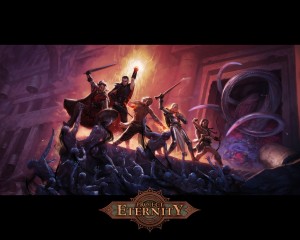Consumer based industries live or die by their fan-base and companies know that to stay in business, they have to keep their fans happy. Normally in the video game industry, designers had to balance their attention between their fan base, and the publisher.
Ignoring either group can be detrimental to the success of their game. Since publishers are the ones that provide the funding for game development, designers heed their words more closely.
But this year marks a change in this relationship, as the popularity of Steam Greenlight and Kickstarter, have given fans more power than ever before.
Greenlight for Success:
Steam is one of the most fascinating pieces of software released over the last decade: Going from a piece of DRM, to a community tool, and now one of the biggest digital stores in the world. Steam was a massive successful for Valve if there ever was one and responsible for the digital shift from retail.
Today, Steam is arguably the golden ticket for Indie developers, with a user base in the millions, can give a small game notoriety like never before. The ease of use and massive sale opportunities can provide a game with more sales in a day then the developer could have ever gotten on their own.
But getting on Steam was not easy. In the past, developers submitted their game to Valve, where it would be examined and critique. If your game didn’t meet their requirements, it would be turned down. Now some of you may think that this would only apply to shovel ware titles, but that wasn’t always the case.
Some of my favorite Indie titles over the last few years were turned down several times from Steam. Din’s Curse from Soldak Entertainment and Armageddon Empires from Cryptic Comet for example.
Both titles were well designed in my opinion but due to issues that the exact details remain private, these games were not allowed on Steam. It wasn’t until a few months ago that Soldak was finally able to get their titles on Steam, but not Cryptic Comet at this time.

FTL was one of the first major success stories on kickstarter that also released their game to positive reviews.
Some developers have commented on the past about the problems of Steam and how it has become so vital for Indie developer survival.
Such as how a great game idea could still crash due to not being accepted on Steam. Finally this year, Valve has made a big concession in the form of Steam Greenlight.
Greenlight’s purpose is to allow the Steam client base the ability to decide what Indie games will be put on the Steam service. Originally, Valve opened this up so that anyone could post any game idea to the service. However the flood of low quality ideas and pitches led to Valve closing Greenlight and implementing a fee.
Currently, anyone who wants to put a game idea up on Greenlight will have to pay for Greenlight access, which is a onetime fee of $100 that Valve has promised, will go to the Child’s Play charity.
Once you’ve given your account Greenlight access, you can set up a page with the *following information required:
- A square branding image (similar to a box cover) to represent your game in lists and search.
- At least 1 video showing off your game or presenting your concept.
- At least 4 screenshots or images.
- A written description of the game along with the tentative system requirements.
After that it’s up to the community. The more votes a game gets, the greater the chance that Valve will decide to release it on Steam. Once a game is chosen, Valve will get in touch with the designers on the matter of pricing, and making sure that the game will work with Steam.
While Greenlight is a way for a smaller developer to get their game in front of a lot of people, Kickstarter is a way to get a game off the ground.
Giving Your Game a Kick Start:
As in the case with making a product, sometimes you have a great idea, but not the money needed to create it. In the past, businessmen would seek investors to provide the starting capital to get the idea off the ground.
Today, this concept had developed into “crowd funding”, and is poised to change the scope of game development. Now, Kickstarter isn’t the first major site to be a part of the crowd funding craze. Indiegogo debuted in 2008, and beat Kickstarter to the punch by a year.
Both sites have the same basic idea: You can pitch your idea to anyone visiting the site, and if they like it, they can donate money towards it. Both sites will receive a percentage of the total donation as a fee when the campaign is done.
The big difference between Kickstarter and Indiegogo is that with Kickstarter, if the pitch doesn’t raise enough money that was originally asked, the creator doesn’t get a cent and all the money gets returned to the people. But with Indiegogo, the pitch can be set up that the creator will still receive the donations even if they didn’t meet the goal, but Indiegogo will take a larger percentage as a fee.
“Today, Steam is arguably the golden ticket for Indie developers, with a user base in the millions, can give a small game notoriety like never before.”
Obviously, Indiegogo is better for the people pitching the ideas as they’ll still receive money, but Kickstarter offers the fans some protection from losing their money on a failed idea. Now, both places were considered small and it took one big idea to turn the Game Industry on its head.
This past year Doublefine studios: The makers of Psychonauts and headed by Tim Schafer, put up a pitch for a new adventure game.
He was only asking for $400,000, and the kickstarter ended at just over 3.3 million, making it one of the largest successful kickstarters at the time. Following the success, other designers saw this as a chance to create the game ideas they wanted, without having it being turned down by major publishers.
We’ve seen the successes of Shadowrun Returns, Wasteland 2, and Project Eternity which has broken the record for the most amount of money pledged on Kickstarter. And the game that I personally can’t wait for, Planetary Annihilation:
[youtube]http://www.youtube.com/watch?v=FhEYvOYceNs[/youtube]
And these are just a few of the many new game ideas that have been posted on Kickstarter following the success of Doublefine.
What Does This Mean For the Future?:
Over the last decade, Indie development has become a viable option for designers who want to create games, without the hassle of a big studio. But there was a lot more risk involved in getting your game out there, or even raising the development money needed.
With Greenlight and Kickstarter, they will help raise awareness for these developers. And by doing so, should raise the quality of the Indie market thanks to the increased revenue and funding for these titles.

The concept art for Project Eternity‘s was one of the many ways Obsidian raised interest for their kickstarter
Kickstarter’s success has also had the side effect of giving mid tier developers a chance to make the games they want without publisher intervention.
Both Uber Entertainment and Double Fine knew that their game ideas would have had trouble appealing to a major publisher due to their target demographic.
But with crowd funding, they were able to secure the funds they needed to make the game they wanted.
Given the problems AAA studios and publishers are facing this year with making a profit, being able to avoid that hassle and just create a game is a very viable option now for designers.
But with that said, there is one negative consequence to Greenlight and Kickstarter. And that is the game not living up to what the designers originally promised. Donating money or casting your vote, doesn’t automatically give you a quality title, and there can be any number of reasons for a game not turning out right.
Unlike with ordering a game, you are technically not guaranteed to receive a quality title or any title when using these services. And the problem is that for every project that doesn’t work out that gets backed leaves a project that could have worked without the funding or votes needed.
With crowd funding, there is only so much money people are willing or able to give. This is why the number of game related kickstarters exploded onto the scene in the last few months. And while sites like Kickstarter and Indiegogo are big now, we don’t know if there will be a point where they become tapped out.
But for now, designers and fans have more freedom in having an effect on the game industry. And don’t think that the allure of Kickstarter has gone unnoticed by me, as I have a plan that will be making use of it soon.
* Originally posted from the Steam Greenlight FAQ


